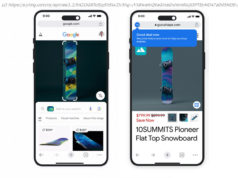At Mobile World Congress 2018 it was a lesser-known brand – in Europe, anyway – that produced one of the most exciting smartphones on the show floor: the
At Mobile World Congress 2018 it was a lesser-known brand – in Europe, anyway – that produced one of the most exciting smartphones on the show floor: the Vivo Apex concept.
We’ve watched phone bezel shrink over recent years, but the Apex concept takes that idea and runs with it. Like, marathon runs with it. With just 1.8mm of black stuff to the left and right sides of its OLED screen, this really is the most bezel-free phone that we’ve ever seen – even beyond what the Xiaomi Mi Mix 2 offers.
That poses an issue with where to put the front-facing camera, though, so the Apex concept has cleverly tucked it away into the top of the handset. Hit the selfie button in the camera app and a motor sees the camera extend from the body, then back away again once the app is closed. Cute.
Squeezing a camera module into this particular concept means the body isn’t as ultra-thin as some of the competition, however, but it’s well finished and feels high-end in the hand.
With the bezel being so small there’s also no space for a front-positioned fingerprint scanner. Vivo has a workaround for this too: In-Display Fingerprint Scanning. You can guess exactly what that means: as the screen is a flexible OLED type, it’s been possible for the company to fuse the fingerprint scanner to the panel itself, making it sensitive to your digits’ unique patterns.
Or multiple digits at the same time, if you want. As the Apex concept’s fingerprint panel covers the bottom half of the screen, you might want to use two fingerprints at the same time for a secure sign-in – wherever you press. We setup our fingerprint with the device, and while it certainly works, it’s not quite as rapid to sign-in as existing fingerprint scanners. It’s a great idea, though.
The next omission due to those dinky bezels is the absence of a front speaker. Instead, Vivo uses the entire display, sending vibrations through the display itself to output calls. This means your ear needn’t be in one specific spot when taking calls, it can touch any part of the phone – as we found when trying it out on a sample call.
Despite the Vivo Apex concept running Android, the experience is rather different in this guise. The company has opted for a more iPhone-style swipe-up menu, with the left corner raising the shortcut icons and current open apps (in a scrollable list), while a swipe down from the top displays notifications. Swipe down in the centre of the screen, implemented due to the lack of typical Android softkeys.
So the software might not be so hot for a typical Android or iPhone user, but the Vivo Apex concept is full to the brim with good ideas. No doubt we’ll be seeing them in not only this phone but other manufacturers’ offerings in the not-to-distant future…






